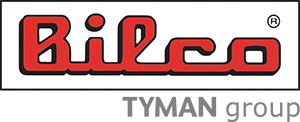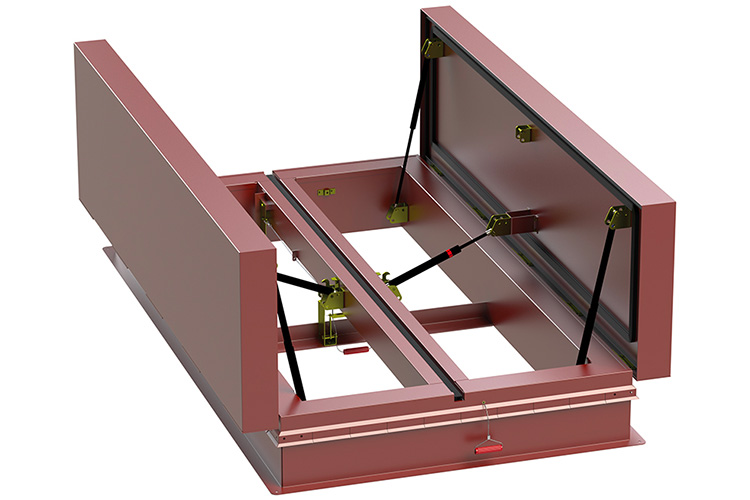STC or OITC? How to select the proper sound rating for automatic smoke vents
February 3, 2021
Diving into the world of acoustical ratings is like opening a can of alphabet soup. You’re unsure which letters will float to the top, what their significance is and how to unscramble and define the mishmash of letters staring at you.
While there is a jumble of letters, the critical ratings for determining the acoustical quality of building products fall into two groups: Sound Transmission Class (STC) and Outdoor-Indoor Transmission Class (OITC). Depending upon the structure being built and the application of the products, the difference in the ratings is essential for architects, designers and construction teams to understand.
STC measures the extent to which sound is prevented from being transferred from one area to another. The higher the STC value, the less that sound can be transferred through a building product. STC is typically used to measure sound transmission loss over a frequency range from 125 to 4000 hertz and is most applicable for interior areas that experience mid to high frequency noises, such as conversation, television, telephones, and office equipment. A product with a high STC value, ranging from 50-60, indicates that loud speech is barely heard, if at all. A low STC rating, 20-25, indicates that loud speech is audible.
OITC rates the transmission sound between outdoor spaces and indoor spaces in a structure. Like the STC rating, OITC measures sound intensity loss in decibels. The OITC rating was developed in 1990 and is typically used to measure sound transmission loss over a frequency range from 80 to 4000 hertz. It is most applicable for measuring the prevention of low frequency exterior sounds such as automotive traffic, construction, and low-flying airplanes through exterior building surfaces.
How does this apply to automatic smoke vents? It’s essential that building designers understand the source of noise, and how they can best diminish its impact.
“OITC is the preferred rating when addressing sound insulation from exterior noise – especially when transportation noise sources are impacting a building facade with significant low-frequency (bass) sound,”
says Harold Merck, principal and acoustician for Merck & Hill Consultants of Atlanta. “While STC ratings may be fine for typical interior noise sources such as voices, STC doesn’t adequately address the extended low-frequency noise contribution of aircraft, traffic or even large roof-top equipment. This also applies to large roof-top equipment noise sources as well. The OITC better addresses low-frequency noise impacts and is the more applicable sound rating for roof mounted automatic smoke vents.”
Similar to automatic smoke vents, the same theory holds true for exterior building windows. “Windows might have an excellent STC rating, but without a high OITC rating, low-frequency sounds can be intrusive,’’ Merck said. “Windows with a high STC rating typically have the same OITC rating as windows with a lesser STC rating, which can be a bit misleading. Ratings that include the OITC are more useful to assess how well a window will isolate environmental noise.”
Automatic smoke vents are life safety products that are generally used in large one-story buildings per National Fire Protection Association (NFPA) standards. In the event of a fire, the vents exhaust smoke, heat and burning gases from the building to improve visibility and to protect the building structure. This provides safe egress for building occupants and allows fire fighters to enter the building and contain the fire. When specifying automatic smoke vents, it is important to consider a product with an acoustical sound rating for applications such as theaters and concert halls, or projects located near highways, airports, or railroad lines.
The BILCO Company recently unveiled a new acoustical smoke vent with an STC rating of 50 and an OITC rating of 46. The new ACDSV smoke vent from BILCO provides the highest level of protection against exterior noise intrusion. In addition, the product has also received an ISO-140-18 sound rating when tested against rainfall sound. The rating measures the impact of sound insulation on building materials – such as roofs, skylights and roof/ceiling systems – incur when exposed to artificial rainfall.
When the Hale Centre Theatre in Utah opened in 2017, architects paid extreme attention to every detail. The state-of-the-art theater includes seating for more than 1,800 guests spread out over 133,000 square feet. “This,” architect Lyle Beecher of Beecher Walker said, “is a career project.”
The theater is situated near a busy interstate and in the flight path of a nearby airport. With those outside influences, Beecher’s team took every step it could to minimize noise infiltration, including 18-inch thick walls and the installation of mechanical equipment outside the wall. The theater also includes 20 acoustical smoke vents from BILCO to limit exterior noise. The vents play critical roles for the theater’s fire safety and noise reduction.
Noise control can be complicated, and the industry is emerging. But for material specialists, the starting point is determining whether the noise concerns originate from an interior or exterior source, and then find the materials that best control them.
@TheBilcoCompany #TheBilcoCompany #flooraccess #roofhatches #smokevents #basementdoors
Company:  Bilco
Bilco
Source: https://www.bilco.com/oitc
Tags:
Access Control
Fire Resistant
Ventilation
New Advanced Thermal Dispersion Airflow Measurement System Flyer (November 20, 2019), Benefits of specifying complete masonry veneer wall systems (January 23, 2019)


